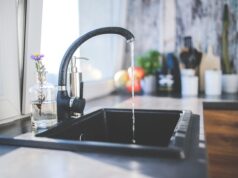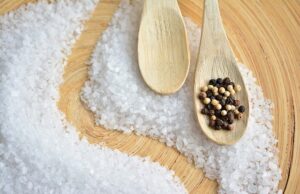Contents
How to Choose the Best Material for Your 60/40 Sink: A Buyer’s Guide
When it comes to selecting a sink for your kitchen, it’s essential to choose the right one. A 60/40 sink is a popular option because it provides a more significant space for washing, rinsing, and drying. However, choosing the right material for your sink is crucial to ensure its durability and functionality for your household’s needs.
Here are some tips on how to choose the best material for your 60/40 sink:
1. Consider your lifestyle – if you have a busy household, opting for a more durable material like stainless steel or granite would make more sense than a more delicate option like porcelain.
2. Budget – the sink material’s cost varies widely, so consider what you’re willing to spend and what will give you the best return on your investment.
3. Maintenance – some materials require more maintenance than others. For example, stainless steel is easy to clean and stain-resistant, while a copper sink may require more attention to prevent tarnishing.
4. Style – the material you choose will also affect the overall look of your kitchen. Depending on your style preferences, you may want to opt for a more classic or modern look.
The most popular sink materials on the market include:
– Stainless Steel – Durable, easy to clean, and affordable.
– Granite – Resistant to scratches and stains, comes in various colors and patterns.
– Fireclay – Classic and easy to clean but can chip over time.
– Copper – Unique and beautiful, but requires upkeep to prevent tarnish.
– Porcelain – Classic and available in many styles and colors but delicate and prone to chipping.
By taking these factors into account, you can select the best sink material for your 60/40 sink that will meet your needs and fit your lifestyle and budget while also complementing your kitchen’s style.
How to Choose the Best Material for Your 60/40 Sink: A Buyer’s Guide
Introduction
When it comes to selecting a sink for your kitchen, you need to consider several factors. One of the most crucial aspects is the choice of material. Nowadays, 60/40 sinks are all the rage in modern kitchens, which come with two basins, one of which is smaller than the other. However, selecting the right material for your 60/40 sink can be a daunting task. This buyer’s guide aims to help you make a well-informed decision.
Materials to Consider
1. Stainless Steel: Stainless steel sinks are durable, easy to clean, and affordable. They have excellent resistance to heat and corrosion and come in a range of finishes that can complement any kitchen decor.
2. Cast Iron: Cast iron sinks are known for their durability and classic style. They are coated in a layer of enamel that is easy to clean and maintain, making them an excellent choice for busy households.
3. Composite: Composite sinks are tough, non-porous, and stain-resistant. They come in a range of colors and designs, making them perfect for contemporary kitchens.
4. Copper: Copper sinks are unique, stylish, and can add a touch of luxury to any kitchen. They are antimicrobial, rust-resistant, and can change color over time, giving them a unique look.
5. Fireclay: Fireclay sinks are made from a blend of clay and glaze, giving them a glossy finish. They are tough, non-porous, and easy to clean.
Factors to Consider When Choosing a Material
1. Durability: The sink’s material should be sturdy enough to withstand everyday use and regular cleaning.
2. Design: The material you choose should complement your kitchen decor and match your personal style.
3. Maintenance: The sink’s material should be easy to clean and maintain.
4. Price: The sink’s price should be within your budget while providing good quality.
Conclusion
Choosing the right material for your 60/40 sink is crucial to ensure long-lasting durability and functional efficiency. Always consider the durability, design, maintenance, and price before making your final decision. With this buyer’s guide, we hope you can make a well-informed choice that fits your needs.
Sources:
– Wayfair – Kitchen Sinks
– Houzz – How to Choose the Right Kitchen Sink
– The Spruce – Best Kitchen Sink Materials
How to Choose the Best Material for Your 60/40 Sink: A Buyer’s Guide
What is a 60/40 Sink?
A 60/40 sink generally refers to a sink that has two different-sized bowls where one bowl is 60% (or slightly larger) and the other is 40% (or slightly smaller).
What Materials are Available for 60/40 Sinks?
There are several different materials commonly used for 60/40 sinks including stainless steel, granite composite, fireclay, and cast iron.
What are the Advantages of Stainless Steel?
Stainless steel is affordable, durable, and easy to clean. It also has a sleek, modern look that fits well with most kitchen styles.
What are the Advantages of Granite Composite?
Granite composite is a durable and scratch-resistant material that is ideal for high-use sinks. It also offers a wide range of colors and finishes to coordinate with your kitchen decor.
What are the Advantages of Fireclay?
Fireclay is a traditional material that is known for its durability and classic style. It is also resistant to stains and scratches.
What are the Advantages of Cast Iron?
Cast iron is extremely durable and can withstand heavy use. It also has a classic look and is available in a wide range of colors.
How Do I Choose the Best Material for My 60/40 Sink?
Consider your budget, aesthetic preferences, and how you plan to use the sink when making your decision. It’s also important to choose a material that is easy to maintain and will stand up to the demands of your household.
What is a 60/40 kitchen sink?
Understanding the Basics of a 60/40 Kitchen Sink
A 60/40 kitchen sink is a type of sink that is characterized by its dual basin design. As the name suggests, a 60/40 sink is made up of two separate compartments, with one basin being slightly larger than the other. In this design, the larger basin takes up 60% of the sink, while the smaller basin takes up 40%.
Advantages of a 60/40 Kitchen Sink
One of the main advantages of a 60/40 kitchen sink is its versatility. The larger basin is ideal for washing larger pots, pans, and dishes, while the smaller basin is perfect for rinsing vegetables or washing smaller items. Additionally, the two separate basins allow for easier multitasking, as you can fill one basin with water while still using the other for washing or rinsing.
Another advantage of a 60/40 kitchen sink is its ease of use. Because these sinks are typically made from sturdy materials such as stainless steel or porcelain, they can withstand wear and tear much better than other types of sinks. This means that they are less likely to scratch, stain, or chip over time, making them a durable and practical choice for any kitchen.
Where to Learn More About 60/40 Kitchen Sinks
If you’re interested in learning more about 60/40 kitchen sinks, be sure to check out the Wikipedia page dedicated to kitchen sinks (https://en.wikipedia.org/wiki/Kitchen_sink). This page offers an in-depth look at the different types of kitchen sinks available, including 60/40 sinks, and can help you determine which type of sink is best for your needs.
How to Choose the Best Material for Your 60/40 Sink: A Buyer’s Guide
Introduction
- Having a 60/40 sink provides ample space for multiple tasks in the kitchen
- The material of the sink plays a crucial role in its durability and longevity
Factors to Consider
- Budget
- Maintenance and ease of cleaning
- Resistance to staining, scratching, and chipping
- Appearance and style
Common Materials for 60/40 Sinks
- Stainless steel
- Cast iron
- Fireclay
- Composite
- Porcelain
Comparison of Materials
- Stainless steel: affordable, easy to clean, but prone to scratches and noise
- Cast iron: durable, retains heat well, but heavy and requires repeated resealing
- Fireclay: durable, scratch and stain-resistant, but expensive and prone to chipping
- Composite: durable, heat-resistant, but can be expensive and difficult to repair scratches
- Porcelain: affordable, easy to clean, but prone to chipping and staining
Conclusion
- Choose a material that fits your needs and budget
- Consider maintenance and longevity when selecting a material for your 60/40 sink
- Compare the pros and cons of each material before making your final decision


































